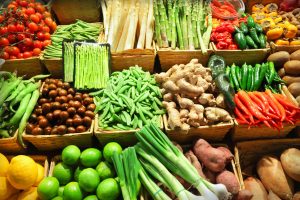 Some great news for the organic food shopper on a budget! (And those of us who’d like to buy organic, but are turned off by the price.)
Some great news for the organic food shopper on a budget! (And those of us who’d like to buy organic, but are turned off by the price.)
Recently, big box retail giant Walmart lowered the price of organic food nationwide with its new in-house line of organic products, such as the kitchen cupboard staples, olive oil and black beans. In typical Walmart fashion, they will cost about 25 percent less than those sold by competitors, based on the prices of 26 national brands, Forbes reported in April.
Advertisement
The general consensus is that organic food is higher quality and better for your health. Pesticide residues on non-organic food have long been associated with a variety of health problems, such as cancer, hormone disruption and brain toxicity. We see traces of pesticides in our everyday living environments. However, a part of the problem is these pesticides can get onto our fruits and vegetables by way of the soil, water supply and the spray drift from neighboring farms.
RELATED READING: Unwanted ingredient lurking in your organic chicken
Reduce your chemical intake with organics
As a point of caution, almost half of all fresh organic produce recently tested in Canada contained some pesticide residue, according to new findings provided by the Canadian Food Inspection Agency. The data, gathered between September 2011 and September 2013, revealed that of the 45.8 percent of samples showed some traces of pesticide.
Some types of organics showed a higher rate of toxic chemical residue than others. For instance, 77 percent of all organic grape samples tested positive, compared to 45 percent of apples. Meanwhile, carrots were some of the lowest rates of pesticide contamination weighing in at 30 percent.
‘Dirty Dozen’ lists produce to watch for
Despite theses findings, organics still come in cleaner than non-organics and offer you more nutrition. Which fruits and vegetables should you try most to buy organic (especially given the lower price opportunity provided by big box retailers)? The “Dirty Dozen” list compiled by the Environmental Working Group outlines the most contaminated fruits and vegetables. They include apples, celery, sweet bell peppers, peaches, strawberries, nectarines, grapes, spinach, lettuce, cucumbers, blueberries and potatoes.
Alternatively, you can incorporate the least contaminated produce in your diet. The “Clean 15” includes sweet corn, pineapples, avocado, cabbage, sweet peas, asparagus, mangoes, eggplant, kiwi, cantaloupe, sweet potatoes and mushrooms.
RELATED READING: mind over matter: does organic taste better?
Simple tips to shop organic
If you’re willing to do some clever shopping, you can enjoy the freshness of organic food without breaking your food budget. Make sure to do a little research.
Shop at farmers’ markets, they are fresh and cheap sources of produce. Purchase a share in a community-supported agriculture program (CSA). That way you’ll receive your organic food straight from the farm and sometimes it is even picked that same morning. This is a bonus! The nutrient value of imported food diminishes when it spends a long time in transport getting all the way to the traditional grocery.
Advertisement
Another tip is to buy in bulk. Whether you’re getting natural foods at a supermarket or a farmers’ market, this is one of the best ways to make your food dollar stretch that extra mile. Don’t buy so much that it goes to waste, though. Remember it’s a delicate balance of buying in bulk and making sure you don’t end up tossing the excess before it goes bad!
The best option if you don’t mind a little work, is buying your own seeds so you can plant your own organic fruits and vegetables. It gives you the control over the final product and can be a relaxing way to spend time outdoors.
Related Reading: Mushrooms: Magical youth elixir?
